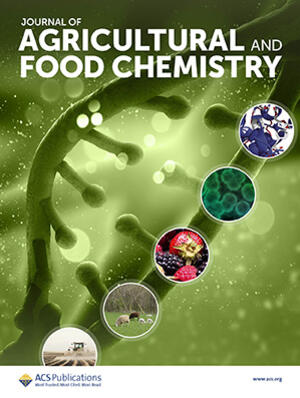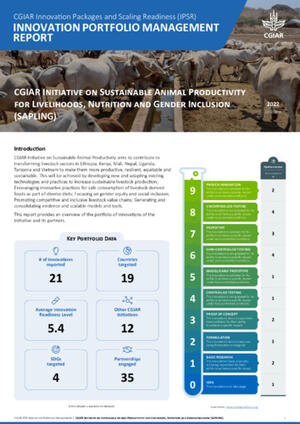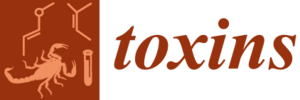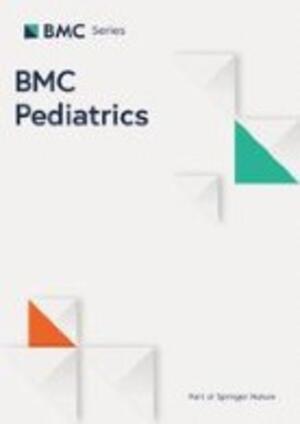
Mycotoxins in Kenyan poultry feeds: Occurrence and use of bentonite and fumonisin esterase as a sustainable mitigation strategy to reduce effects of aflatoxins and fumonisins in broiler chicken and layer hens production
Abstract
This doctoral thesis consists of six chapters.
Chapter 1 is a general introduction of what mycotoxins are and their toxicological impacts on poultry, and this is based on a published review paper. Major mycotoxins covered in detail are AFs, FBs, DON, ZEN, OTA, and T-2/HT-2. Some of the frequently occurring and yet neglected mycotoxins are discussed as well, and their toxicities highlighted. These include BEA, ENNs, MON, AME, AOH and modified mycotoxins of ZEN and DON such as deoxynivalenol-3-glucoside and zearalenone-14-sulfate. Also in this chapter, co-occurrence of mycotoxins in feed and feed ingredients is presented and co-contamination by FBs and AFs in feed and feed ingredients from SSA is highlighted with their impact on chickens. Legislation on mycotoxins in poultry feeds are further explored in this chapter, with particular discussion of the regulatory and guidance limits in SSA. Techniques for detecting mycotoxins biological matrices are also presented and sample preparation, clean-up and detection, especially using LC-MS/MS highlighted. Moreover, mycotoxin mitigation strategies for poultry protection are discussed, with the post-harvest methods that employ clay-based compounds, such as bentonite, and fumonisin esterase noted. Lastly, the rationale of this doctoral study is highlighted and objectives of this thesis discussed, with specific objectives being i) To study the prevalence of mycotoxins in Kenyan poultry feeds; ii) To produce sufficient quantities of AFs and FBs in the laboratory to be used in subsequent long-term in vivo trials with broiler and layer chickens; iii) To evaluate the effects of feed contaminated with AFs or FBs, or their combination, on broiler chickens and laying hens’ health and productivity; iv) To evaluate the carry-over of AFs to chicken products in a single or concomitant FBs contamination; and v) To assess the efficacy and safety of bentonite and fumonisin esterase mycotoxin detoxifying agents (feed additives) to protect chickens against negative health and productivity effects of AFs and FBs, respectively, and carry-over of AFs to chicken products.
Chapter 2 details a survey of mycotoxin contamination levels in poultry feeds and feed ingredients from Kenya. This study was carried out to give an overview of the mycotoxins levels in feeds sold in Kenya in order to use relevant field concentrations for in vivo trials with broiler and layer chickens. Both feed and feed ingredients had a high prevalence (above 70%) of Fusarium mycotoxins including total FBs (max. level of 14,346 μg/kg), DON (max. level 1,037 μg/kg) and ZEN (max. level 910 μg/kg). Total AFs (max. level 99 μg/kg) were detected in 93% of the feed samples and in 29% of feed ingredients. Low occurrences of OTA (19%), T-2 and HT-2 (4%) were observed in feed and feed ingredients. Neglected and modified mycotoxins including Aspergillus toxins, Fusarium metabolites, Alternaria toxins, Penicillium toxins were also found in the samples. All mycotoxins were detected below EU regulatory limits, except for AFB1, where 16% of the samples had concentrations above the EU and EAC regulatory limits of 20 μg/kg for AFB1 in poultry feeds. Co-occurrence of mycotoxins in the samples was observed with all 4 major mycotoxins (AFs, FBs, DON and ZEN) detected in 55% of the samples and co-occurrence of AFs with FBs observed in 61% of the samples.
In chapter 3, methods for laboratory production of large quantities of AFs and FBs for use in long-term in vivo trials are presented. Factors that affect mycotoxin production such as type of substrate, temperature, light and fungal isolate were optimized to enable maximum production of these mycotoxins. The concentration of AFs and FBs in the culture materials were screened by ELISA methods and confirmed by LC-MS/MS methods. Highest yield of AFB1 (88,174 μg/kg of substrate) was obtained in maize kernels inoculated with three different A. flavus isolates and incubated at 29°C for 21 days. For FBs, the highest yield (1,043,806 μg/kg of substrate) was in cracked maize kernels inoculated with three different F. verticillioides isolates and incubated for 21 days at 22–25°C in a growth chamber with yellow light conditions. Sufficient amounts of AFB1 and FBs were produced in maize, which was then mixed with control feeds (with no added mycotoxins or detoxifiers) to prepare experimental diets for in vivo animal trials.
Chapter 4 describes the effects of dietary AFB1 and FBs (FB1+FB2), alone or in combination on broiler chickens’ health and productivity as well as carry-over of AFs from feed to plasma, liver and muscle. Safety and efficacy of bentonite and fumonisin esterase to counteract the effects of AFB1 and FBs were also evaluated. Four hundred one day old chickens were fed 20 diets (20 birds/treatment) from 1 to 35 days of age. The diets were either control or AFB1 (60 or 220 μg/kg feed) or FBs (17.43 mg FB1+FB2/kg feed), alone or in combination, and with bentonite clay (AFs binder) and/or fumonisin esterase (FBs modifier) in selected diets. The results showed that the levels of AFs and FBs used in this study did not affect growth performance of the broiler chickens. Nevertheless, the FCR was poor in broilers fed high AFB1 only when compared to those fed both high AFB1 and FBs. Changes in serum TP and ALB were observed in birds fed FBs alone or in combination with AFB1. The relative heart weight of the birds was increased by dietary high AFB1 and FBs. The efficiency of the bentonite was demonstrated in that the binder reduced the effects of AFB1 on the heart, liver and spleen weights. In-house developed and validated UHPLC-MS/MS methods were used to assess the carry-over of AFs from feed to plasma, breast muscle and liver of the birds. Residues of AFB1 (max: 0.12 ± 0.03 μg/kg) were detected above the limit of quantification (LOQ) in liver only, and from birds fed diets contaminated with high AFB1 (220 μg/kg feed). Supplementing bentonite clay into these diets reduced the accumulation of AFB1 in the liver by up to 50%, although the differences were not significant. No AFs were detected in breast muscles of the broiler chickens whereas AFB1 was detected in plasma of birds fed high AFB1, but below the LOQ. Moreover, at the doses tested, both bentonite clay and fumonisin esterase were found to be safe and did not affect the growth and health of the broiler chickens.
In chapter 5, four hundred 21-weeks old laying hens were used to study the effects of AFB1 and FBs, alone or in combination, on health and productivity of the laying hens as well as carry-over of AFs from feed to plasma, liver, muscle and eggs. The safety and efficacy of bentonite and fumonisin esterase to prevent or reduce effects of AFB1 and FBs, respectively, were also evaluated. The hens were fed either the control diet or with AFB1 (54.6 or 546 μg/kg feed) and/or FBs (7.9 mg/kg feed) for 28 days. In selected diets, bentonite clay or fumonisin esterase were added. After 28 days, the results showed that neither AFB1 nor FBs caused an effect on performance, except for egg production which was reduced in hens fed diets with high AFB1 (546 μg/kg feed). Changes in serum TP and ALB levels and relative weights of liver, spleen and gizzard in laying hens fed contaminated diets are discussed. Analysis of residues of AFs in liver, plasma, muscle and eggs using validated UHPLC-MS/MS methods showed that the highest residues of AFB1 (0.66 μg/kg) were present in liver samples of laying hens fed 546 μg AFB1/kg feed and 7.9 mg FBs/kg feed for 28 days. Furthermore, AFB1 was detected in eggs and plasma of layers fed AFB1 (546 μg/kg) alone or with FBs (7.9 mg/kg feed), whereas no AFs were detected in the breast muscles of the laying hens. The efficacy of the two mycotoxin detoxifying agents (bentonite and fumonisin esterase) to reduce or suppress the negative effects of AFs and FBs was demonstrated in this study. The bentonite binder was also found to be effective in reducing the accumulation of AFs in the liver of laying hens as well as carry-over of AFs into eggs. Furthermore, bentonite clay and fumonisin esterase at the doses tested were safe and had no effect on the health and productivity of the laying hens.
In chapter 6, general discussion, relevance of the study, future perspectives and conclusion are presented. The general discussion highlights the mycotoxins of concern in SSA, particularly AFs and FBs and the need to evaluate their effects on animal health and productivity, as well as their carry-over to animal products. Use of laboratory produced mycotoxins in feeding trials are also outlined in the discussion. The parameters to include when assessing toxicological impacts of mycotoxins or potential mycotoxin detoxifiers on chickens are further presented. The parameters include blood biochemical changes, gross pathological changes, organ weights and safety of animal food products. Also, the importance of analysing fecal, Sa/So ratio and microbiota of the GIT to determine the efficacy and safety of a potential mycotoxin detoxifier are further highlighted. Safety of mycotoxins detoxifiers on animals as well as the effects of long-term use are further discussed.
The relevance of the current doctoral thesis is discussed on the basis of its contribution towards safe feed and food and linked to the UN SDGs agenda for food security and safety aimed at ensuring provision of sufficient and nutritious food to everyone by 2030. In the section of future perspectives, the research gaps are highlighted for every chapter of this thesis and areas for future studies are suggested. These include collaborations as well as coordination among private and public sectors to ensure continuous monitoring of mycotoxins along the food chain. The need for capacity building for human resources and equipment are also noted. Robust methods for simultaneous detection of multiple mycotoxins in food and feed is suggested. The need to carry out more in vivo animal trials, especially in SSA, to assess effects of mycotoxins on animal health and productivity, and in particular the effects of co-contamination by multiple mycotoxins, under conditions similar to farming practices in SSA is advised. Hindrances to setting regulatory limits for different mycotoxins in feed and food, especially in SSA, are highlighted in this section, and the need to harmonize regulatory limits of mycotoxins in different commodities across regions and trading blocks is also suggested. Some of the sustainable post-harvest mitigation strategies currently being explored to ensure safety of animal feeds and animal food products are explored in this section, particularly those that are cost effective, efficient and readily available in SSA such as clay compounds.
In the conclusion, this doctoral thesis provides evidence on effects of AFB1 or FBs or both, on health and productivity of broiler chickens and laying hens as well as transfer of AFB1 to poultry food products. Information on safety and efficacy of bentonite clay and fumonisin esterase to counteract the negative effects of AFB1 and FBs, respectively, is further provided. This thesis also advises on laboratory production of mycotoxins as a cost effective means of producing sufficient quantities of mycotoxins for long-term in vivo animal experiments. The need to continuously monitor for multi mycotoxins contamination of poultry feeds to prevent their effects on animal health and productivity as well as transfer to animal source foods is suggested to prevent the mycotoxins from entering the food chain.
Citation
Ochieng, P.E. 2023. Mycotoxins in Kenyan poultry feeds: Occurrence and use of bentonite and fumonisin esterase as a sustainable mitigation strategy to reduce effects of aflatoxins and fumonisins in broiler chicken and layer hens production. PhD thesis. Liège, Belgium: Université de Liège and Ghent, Belgium: Ghent University.









